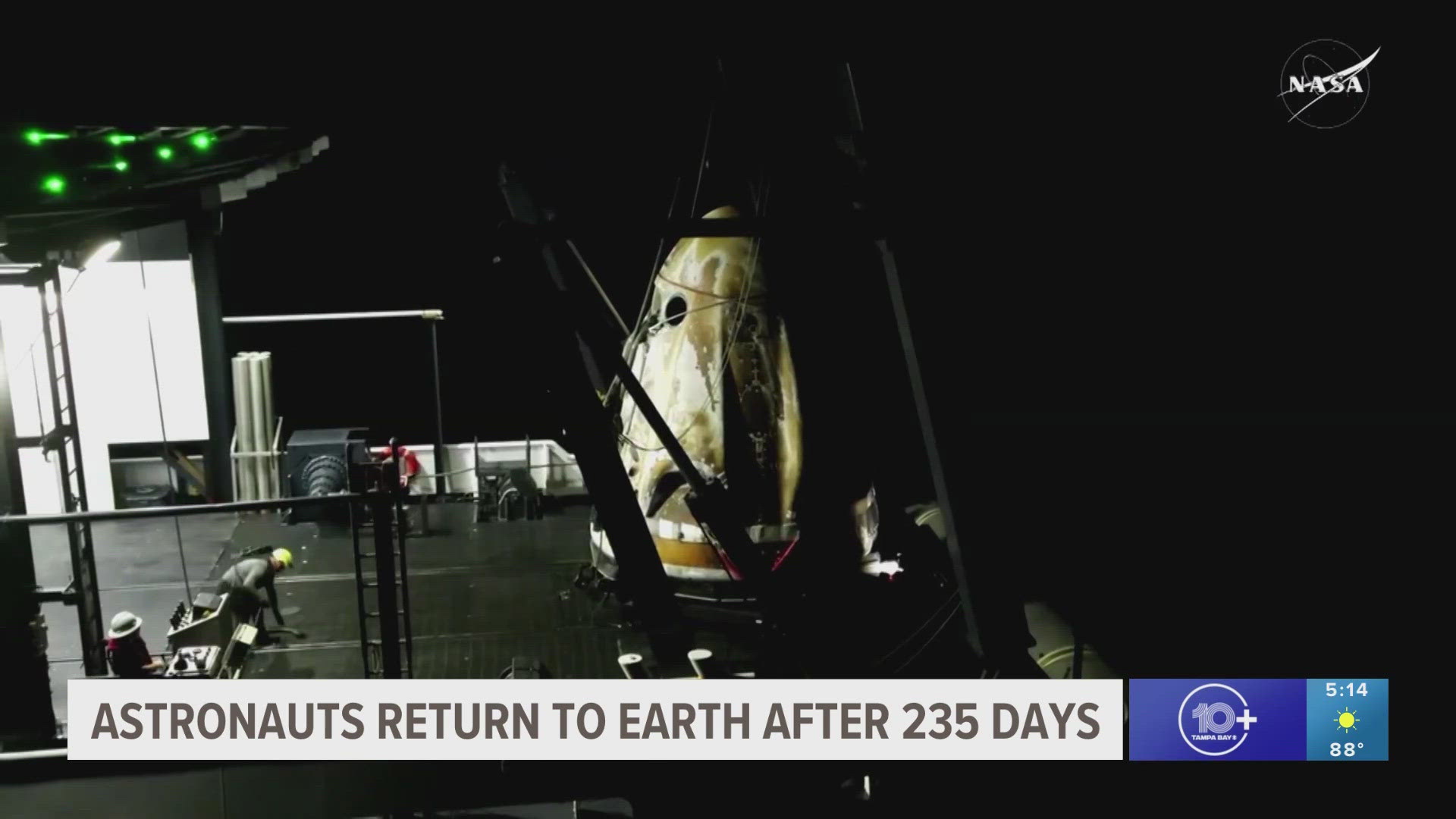ST. PETERSBURG, Fla. — There could be a new crater on the moon, thanks to a spent rocket booster said to have been heading toward the lunar surface Friday.
Experts predicted the rocket, identified as being China's 2014 Chang'e 5-T1 lunar mission, would make impact with the moon's Hertzprung crater around 7:25 a.m.
The only problem? The collision site is on the far side of the moon. So, while we can assume the spent rocket booster has reached its predicted final destination, there has yet to be observational confirmation.
"A reminder that there is no live tracking of the impacting rocket stage. Based on observations made weeks ago, we're confident that it will hit Hertzprung crater at 1225 UTC Mar 4, because we trust Uncle Isaac - successfully predicting the trajectory of things in space since 1687," Jonathan McDowell, an astronomer at the Center for Astrophysics tweeted.
Bill Gray, the creator of the Project Pluto software says while the idea of a booster colliding with the moon may seem concerning, there's really nothing to worry about.
"Keep in mind that this is a roughly four-ton object that will hit at 2.58 km/s. The moon is fairly routinely hit with larger objects moving in the ballpark of 10-20 km/s; hence, the craters. It's well-built to take that sort of abuse," he wrote at the time.
McDowell has echoed the sentiment, calling the impending incident "interesting, but not a big deal."
NASA says its Lunar Reconnaissance Orbiter would not be in a position to observe the projected impact as it happened, but the mission team is assessing if observations can be made to "later identify the crater formed by the impact. "
"This unique event presents an exciting research opportunity. Following the impact, the mission can use its cameras to identify the impact site, comparing older images to images taken after the impact. The search for the impact crater will be challenging and might take weeks to months," a NASA spokesperson wrote in a statement to 10 Tampa Bay.
Back in 2009, NASA intentionally crashed a 40-foot-long section of a rocket into the moon in the name of science.
It was called the Lunar Crater Observation and Sensing Satellite or LCROSS mission and was used to "kick up a giant plume of debris" for a spacecraft to then fly through to identify what the plume was made of.
The "used-up rocket" was sent into the Cabeus crater near the moon's south pole. The mission allowed for real-time images and data to be streamed back to Earth.



